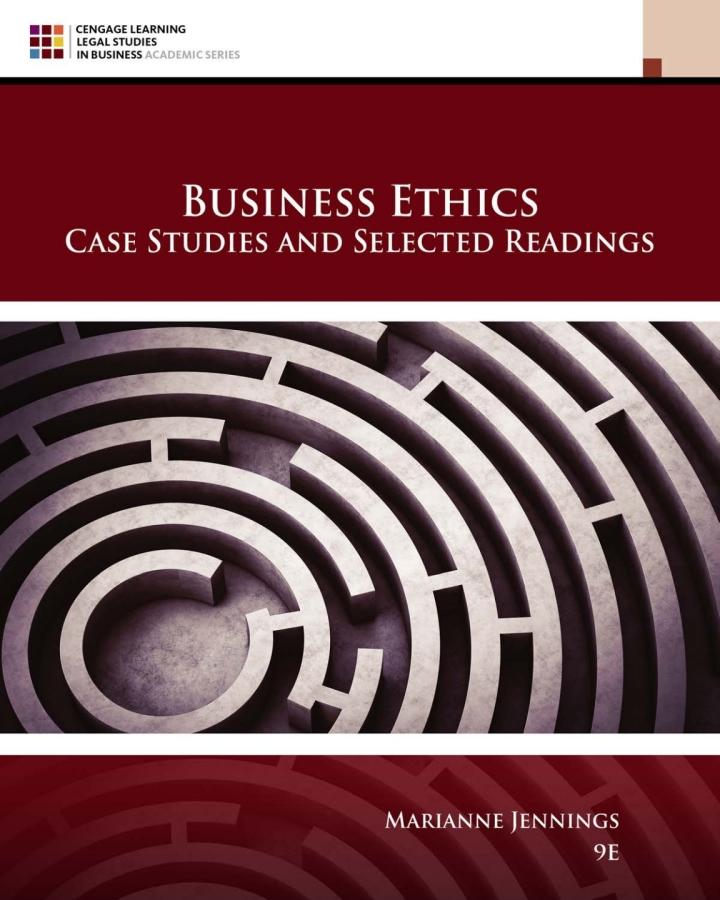In 1996, Boeing and Lockheed Martin were in a head-to-head competition for a multibillion-dollar government contract for
Question:
In 1996, Boeing and Lockheed Martin were in a head-to-head competition for a multibillion-dollar government contract for furnishing the rockets that are used for launching satellites into space (a project referred to in the industry as the Evolved Expendable Launch Vehicle, or EELV). The satellites perform various functions and could be communication or spy satellites. It was during this competitive time frame (1996) for the rocket launcher project that Kenneth Branch, a space engineer and manager at Lockheed facilities in Florida, traveled to McDonnell Douglas facilities at Huntington Beach, California, for a job interview. McDonnell Douglas was working on the rocket bid at the same time that it was being acquired by Boeing. Boeing's acquisition of McDonnell Douglas had been finalized at the time of the Branch interview, but the logistics of acquisition had not yet been completed (it would be completed in August 1997). Boeing's acquisition of McDonnell Douglas and the combination of Lockheed with Martin Marietta meant that in the future the federal government would basically be dealing with two large contractors on all of its projects. Near the end of his interview at McDonnell Douglas, Branch showed the participants in the interview process a copy of Lockheed's proposed presentation for the government project. Six months after his interview, in January 1997, Branch began work at Boeing on Boeing's rocket project, a \(\$ 5\) billion project. The pressure for Boeing to win the contract became intense at that time. Boeing executive Frank Slazer, the director of business development for the project, encouraged Boeing employees working on EELV to develop "an improved Lockheed Martin EELV competitive assessment." He also encouraged the employees to find former Lockheed employees to get their thoughts and impressions about the project. Sometime during the first quarter of 1997, Lockheed sent Mr. Branch a letter reminding him of his confidentiality agreement with Lockheed and his duty not to disclose any proprietary information in his new position at Boeing. During this same period, a Boeing employee filed a report that she had seen Mr. Branch in the hallway with a notebook that had the Lockheed logo on the outside. She was reprimanded by Tom Alexiou, Mr. Branch's supervisor, for doing so, and no one took any action with regard to Mr. Branch or the notebook. Shortly after, the project was awarded in what is called a "leader-follower" contract, in which the two companies compete for the term of the satellite launcher program. Boeing did emerge as the leader in that project and was awarded nineteen of the planned 28 rocket launches, a total contract value of \(\$ 1.88\) billion. Shortly after, there were rumblings around the industry and government agencies about Boeing's conduct and possible possession of proprietary documents during the time of the bids. The government began an investigation into whether proprietary documents had passed from Lockheed to Boeing. Boeing also launched, as it were, an internal investigation and fired Mr. Branch as well as one of his supervisors, William Erskine, because it found that the two were in possession of thousands of pages of proprietary documents that included Lockheed Martin information on specifications and cost. The terminations were reported to the federal government, along with Boeing's assurances that it had dealt with the situation and completed cleansing its own house.................
Discussion Questions
1. What made the engineers and executives want the Lockheed documents and then use them? Do you have some ideas for lines for your credo that come from seeing what happened with the engineers and the executives who were complicit?
2. List the long-term costs and consequences of Boeing's use of the documents. Consider others you may see that are not called out in the case.
3. Do you think the fact that Boeing continued to receive contracts is evidence that ethics don't matter?
4. One analyst has said that the problem with Boeing is that it cannot admit that the problems were internal but always seeks to blame the problems on a "few bad apples." Is this statement valid?
5. List the categories of ethical breaches that you see in this scenario.
Step by Step Answer:

Business Ethics Case Studies And Selected Readings
ISBN: 9780357453865
9th Edition
Authors: Marianne M. Jennings





